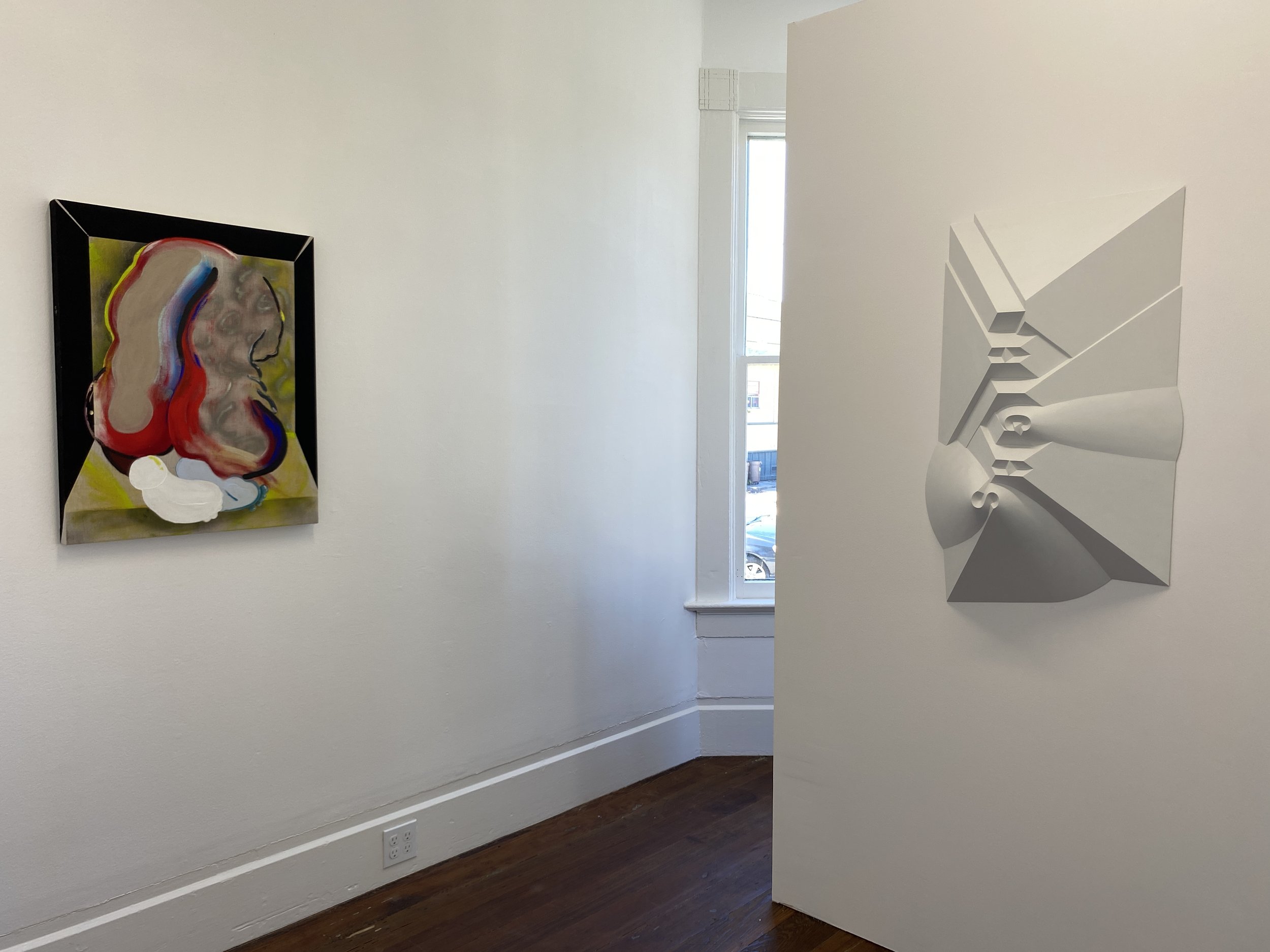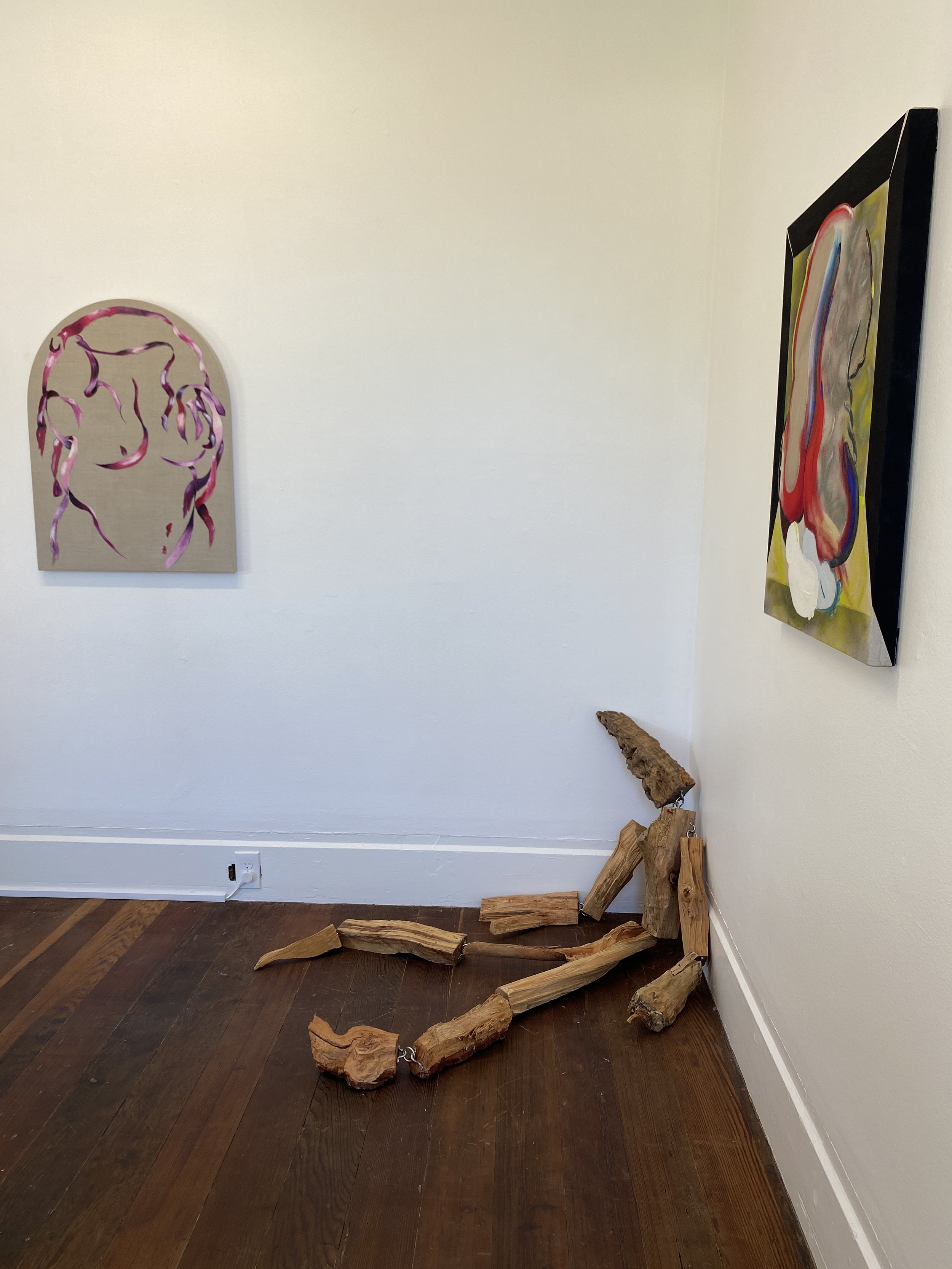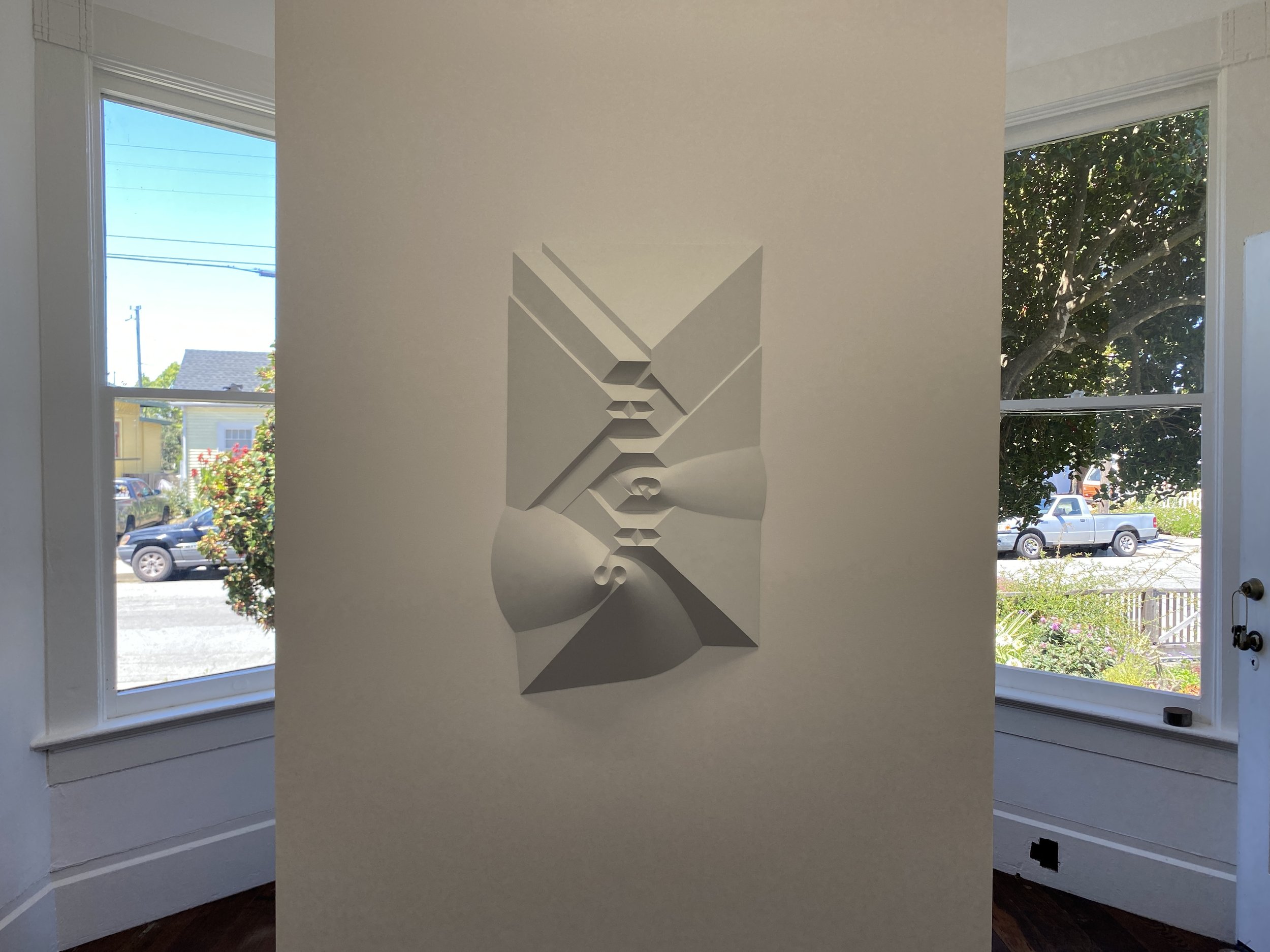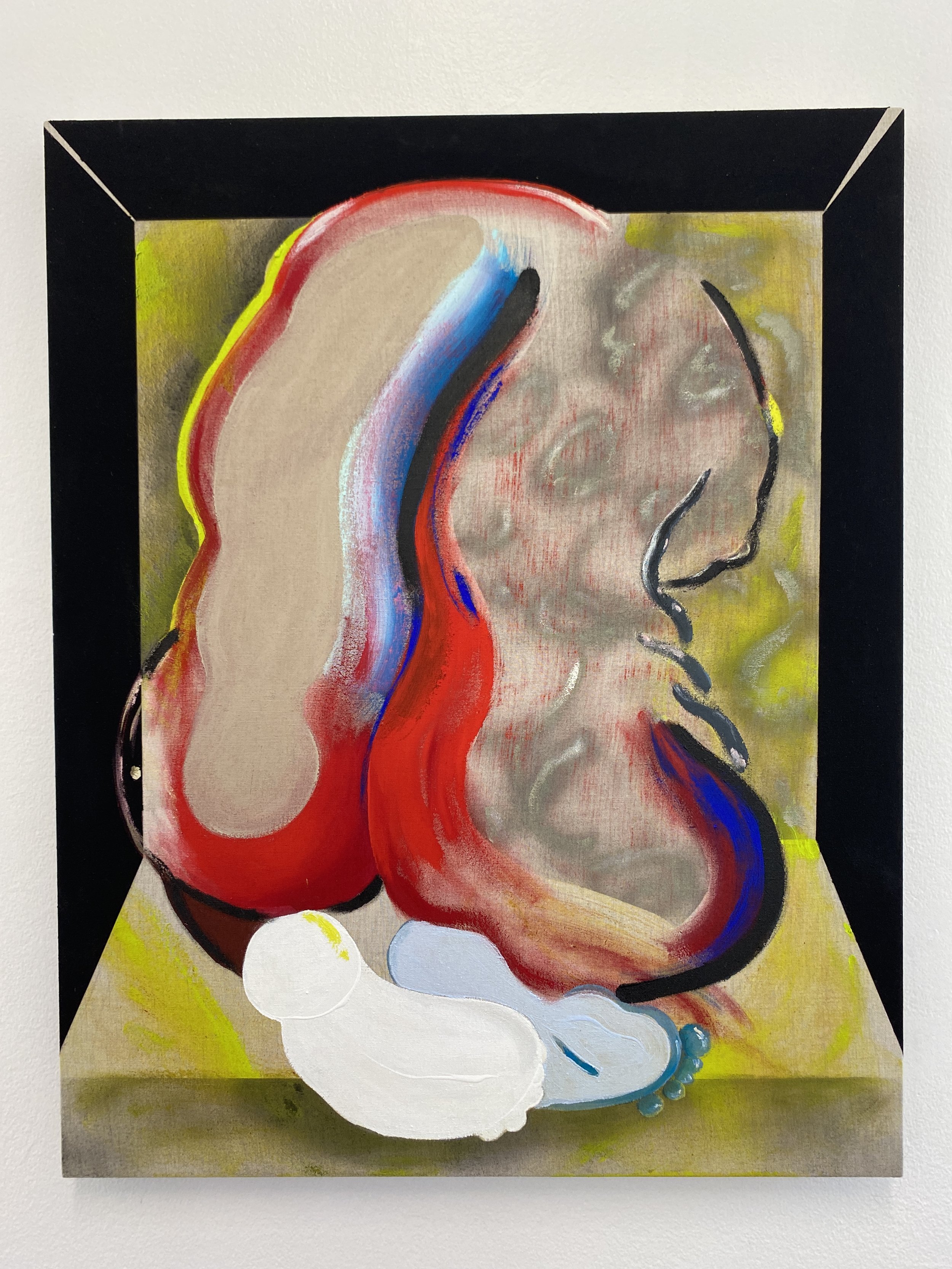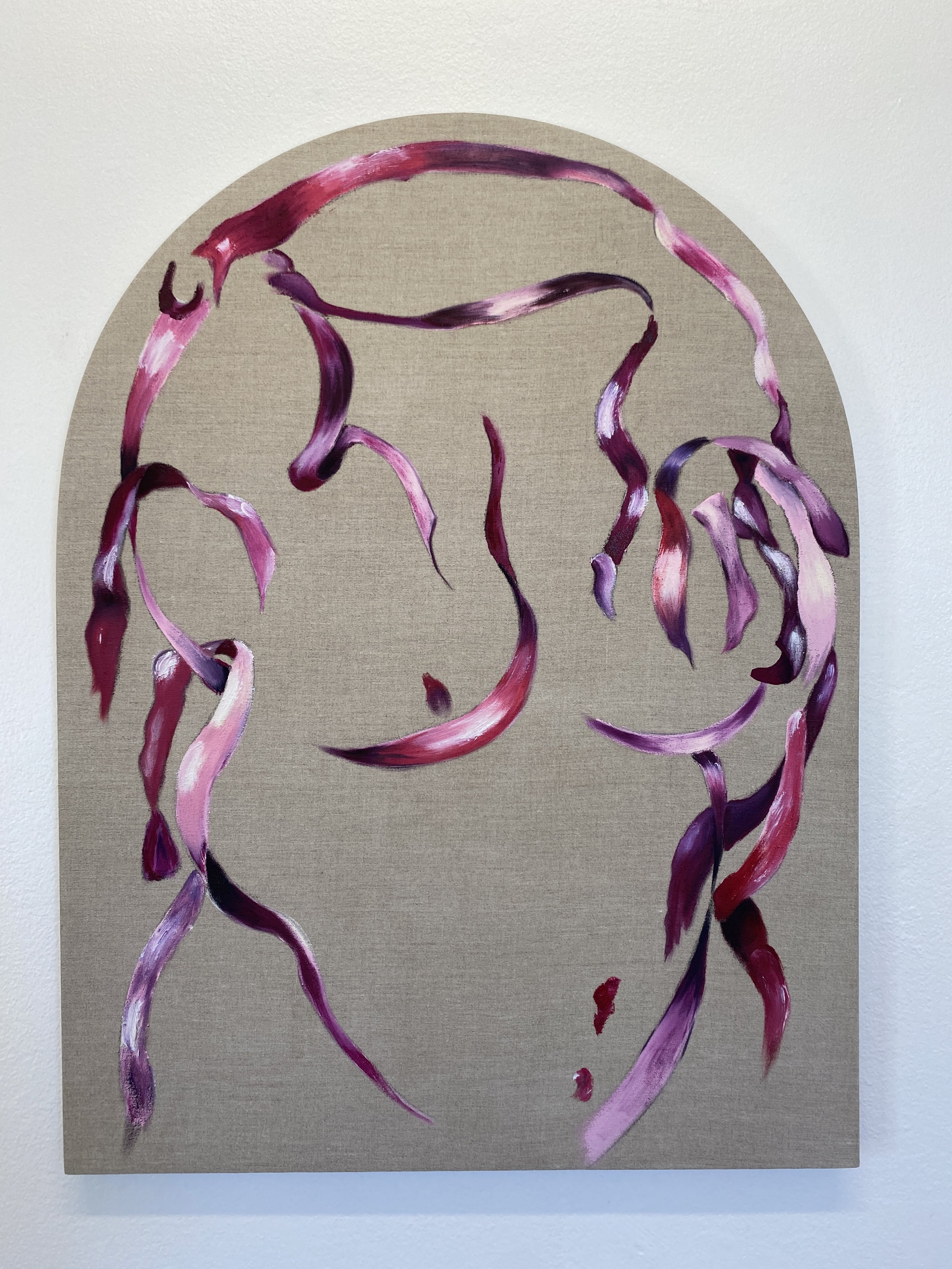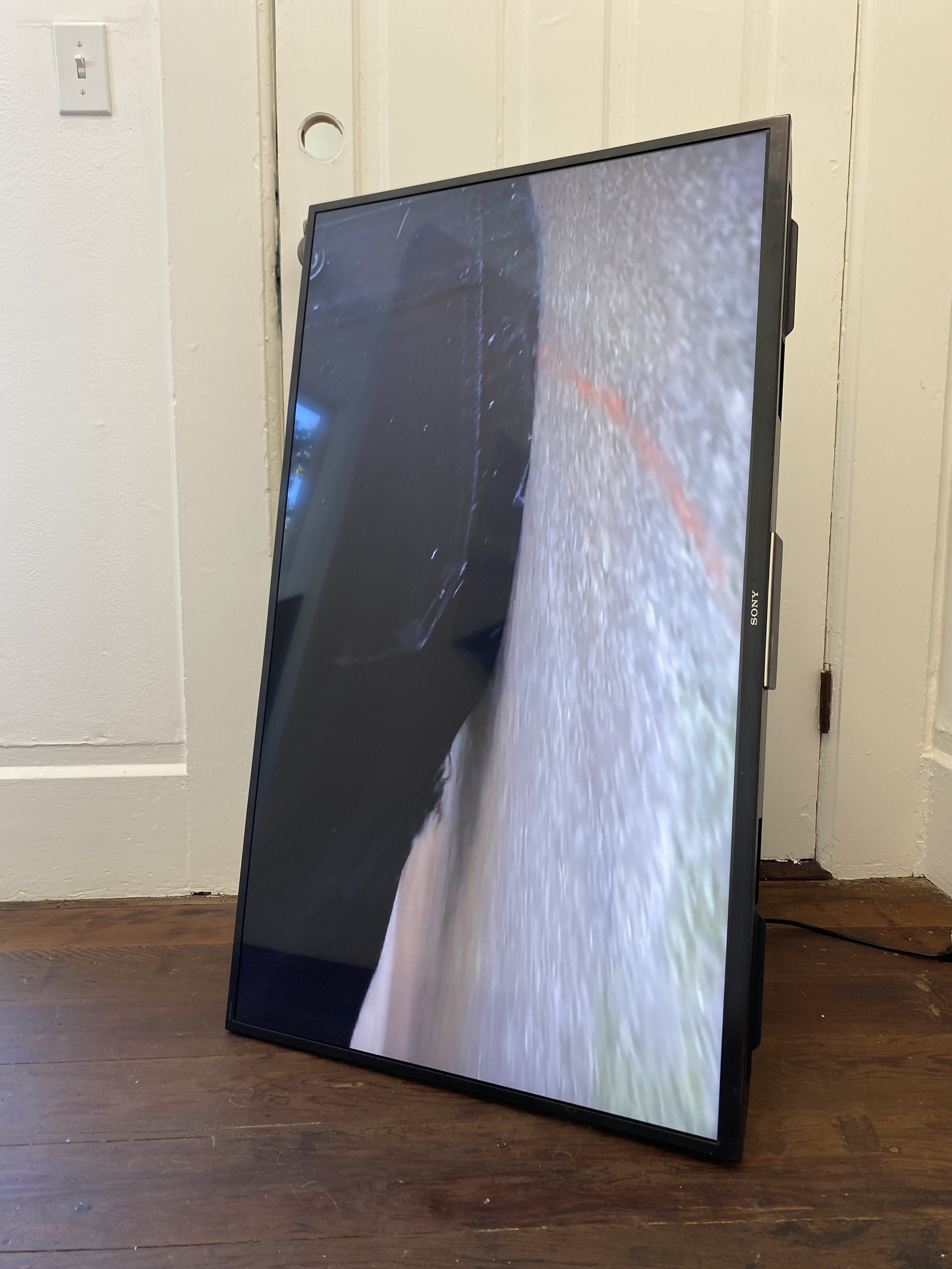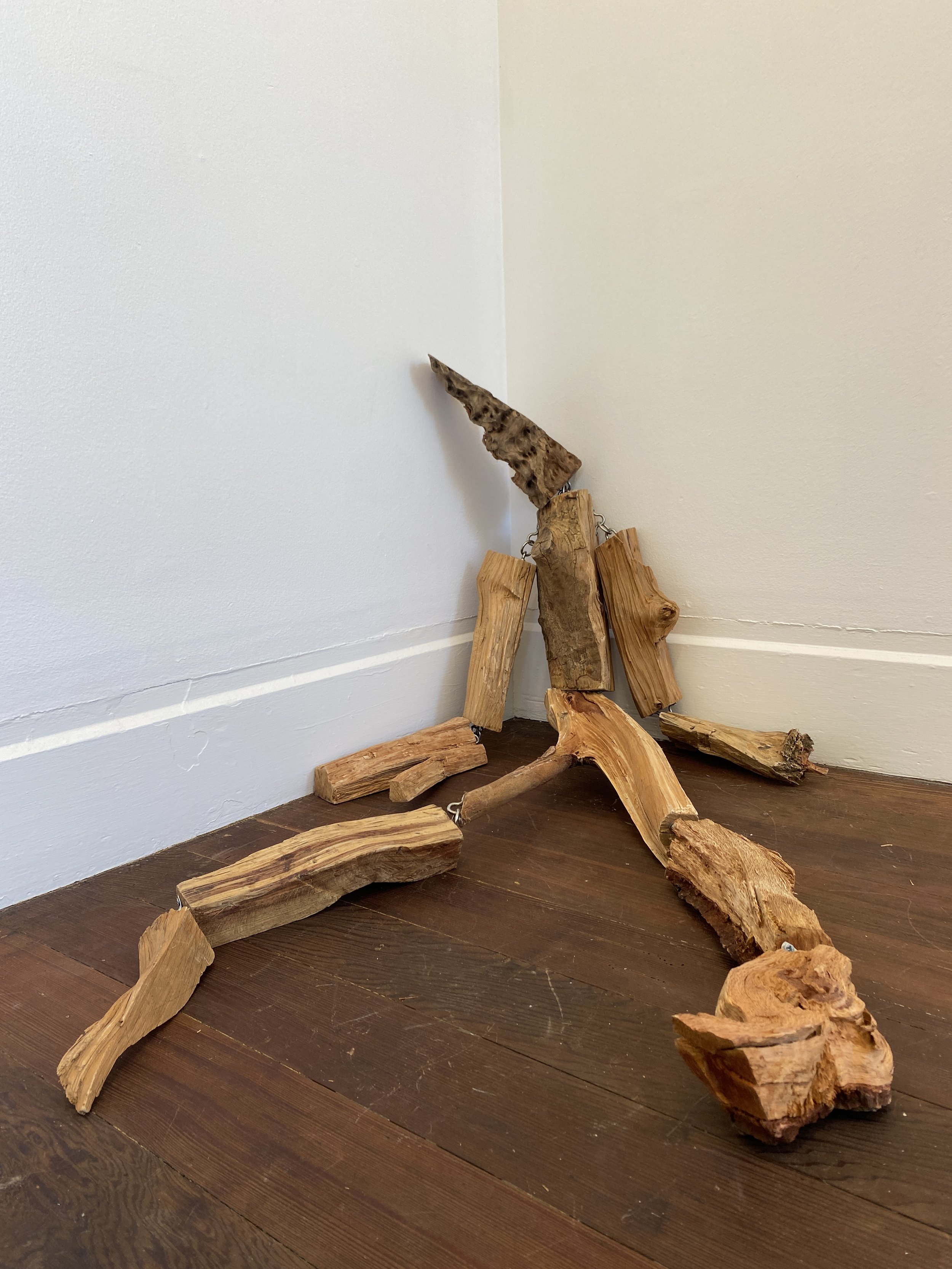g
g
v
v
a
a
R
R
Y
Y
Gravy Gallery was a contemporary art space in the front room of a Victorian house across the river from downtown Santa Cruz. Exhibitions focused on conceptual themes connecting artists across the country. The gallery's domestic setting supported artists' engagement, providing a space to hang and connect local artists with visiting artists. Gravy Gallery will hopefully reemerge in a new form in the near future.
Gravy Gallery is inspired by a love for all things grids and wavy.
Gravy is closed.
Gravy is closed.
PAST EXHIBITIONS & EVENTS
PAST EXHIBITIONS & EVENTS
Heat Haze
July 7 - July 29
Opening Reception: Friday July 7, 5-9 pmGravy Gallery is pleased to present "Heat Haze," a group exhibition featuring Artists Brody Albert, Olivia Hill, and Heidi Schwegler. Heat Haze refers to the mirage observed when viewing objects through a mass of heated air. These Artists are all based in Southern California, where the air becomes so hot it's wavy.
The exemplary craftsmanship in these artists' work toys with hyperrealistic representations, each item being familiar yet slightly off, causing a double-take. The pieces are ponderous and uncanny, showing the Artists clear vision of humans' touch on the land. Instead of editing out the ubiquitous forms of trash, debris, and packages on doorsteps, even the sense of the screen as an apparatus that delivers a bird's eye view of the land is highlighted through their works, unveiling an absurd mimicry that can only be a mirage.Aja Bond
I LOVE YOU AND I DON’T WANT YOU TO DIE
June 2nd - July 1st
Opening reception: Friday June 2nd, 5 - 9 pm
Featuring Compost Tea House: A pop-up tent in which guests drink sun-tea of wild herbs while compost tea is brewed using solar power.
Gravy Gallery is pleased to present I LOVE YOU AND I DON’T WANT YOU TO DIE, a solo exhibition by artist Aja Bond which will be on view from June 2 through July 1. I LOVE YOU AND I DON’T WANT YOU TO DIE exists at a threshold - two years of work culminating in a celebration of the connections co-created with a place before an indefinite relocation. Every piece expresses or enacts care - for land and soil, for memories, for living and dying things, and the unseen threads that hold it all together. Bacteria from loved one’s skin grows alongside mushrooms and honey wine; remedies and fragrances anoint and convey something indescribable about unique and miraculous sites; much-loved houseplants are adopted. Our collective practices and dreams of care must be articulated and shared at the same time as we fend off crises at seemingly every turn. Feminist posthumanist networks of care work to build reciprocal connections with more-than-human beings beyond the binary of life and death and expand the range of who and what is grievable - this show is a gesture in that spirit.Aja Bond is an interdisciplinary artist primarily working with the processes of death/grief and compost/decomposition. She uses iterative processes, ritual, feminist science, writing and social practice to explore the potential to be transformed by deepening relationships with the soil and the pervasive losses of the Anthropocene. Catharsis, reciprocity and wonder are the means by which she endeavors to resume a right-sized place in the web. Allison Cekala
American Pile
May 5 - May 27, Opening reception Friday, May 5th , 5 - 8 pm
American Pile is an ongoing photographic project by Allison Cekala depicting piles across the American landscape. Together the photographs form a typology of inadvertent sculptures of mountainscapes made by humans. Although the humble pile is a simple and ubiquitous form, its presence unearths hidden stories within the everyday landscape. Upon closer look, the piles tell stories of displaced materials, economic development, and the ways in which humans shift and transform the surface of the earth. The full project can be viewed @americanpile Gravy Gallery Gala
Gravy Gallery had a Gala on Saturday, December 17th!
We joined up with phenomenal chef Amelia Telč from Brutta, natural wine superstar Apéro Club, and divine LA-based musician and performer Julius Smack. It was a golden hour event of playfully executed food, the best wine, and a heart-melting performance.
Tickets and donations from this celebration helped contribute toward funding the 2023 series of exhibitions and performances and fostering the Gravy community.
Julius Smack, photo by Evan WalshNena Hendrick, "Metasomatic Record" (still image), HD Video, 2022Gravy Gallery is pleased to host LANDING, a temporary, collective, and migratory art and event program based in Santa Cruz.LANDING projects focus on how we use and relate to the land that surrounds and supports us, with special attention to economic, racial, Indigenous, and environmental justice as they relate to land use and art practices. Our programming focuses on six themes —Fire, Water, Food, Housing, Energy, and Waste—and how approaches to these interconnected issues might be re-imagined through art practice.LANDING will present multiple exhibitions at Gravy Gallery over the months of December and January.December 2 - January 21
Following Water
Opening Reception Friday, Dec. 2nd 5 - 9pmDecember 2 - 8
"Following Water": Five artists from elsewhere who are currently living and working in the San Lorenzo River ValleyKevin Corcoran, Nena Hedrick, Lee Chang Ming, Fernanda Rappa, and Shane Scopatz will present works that tune in to local conditions through approaches shaped by the actions of water.Stepping Through
Opening Reception Friday, December 9th 5 - 9pmDecember 9 - January 7
"Stepping Through": Four artists traveling between and across continents, identities, species, and timeWith water also as a shared theme, Amy Blondell, Leslie Horwitz, Génesis de Las Olas, Numpie, and Jingtian Zong will present works that track and register fluid experiences of moving across boundaries and creating cross-boundary relations.Ant LorenzoMuseum of Gold
January 13 - January 21Stay tuned for opening date & further details.Anna Wittenberg
October 7 - November 19
"The Ruminant" is a sculptural installation with an accompanying single channel video projection. The floor-bound sculpture, organized by a steel vertebrae, references Mammalia. The feet, discrete objects of unto themselves, incorporate various elements including a tree trunk, parts of discarded chairs and a recycled plastic bottle among other disparate materials. The feet function like cud, fashioned out of reclaimed fragments and modern detritus that have been chewed up, melted, and otherwise metabolized. The video projected on the ceiling features highly rendered and staccato footage of parts of farm animal's bodies, privileging encounters with the rectangular irises of ungulate eyes intercut with cropped shots of llama hooves, horses’ teeth, and the like. Anna Wittenberg is an interdisciplinary artist who lives and works in Los Angeles. She received her MFA from the University of California, Riverside in 2017 following her BA in Media Studies from Pitzer College. Wittenberg works primarily in video, sculpture, and drawing. Her work engages junk, myth, the body and tropes of film production and cinematic structures. Her installations employ video and sound to alternately alienate and seduce, in an effort to interrogate contemporary and historical mores.Soft Spots
July 1 - August 21, 2022.
Pui Tiffany Chow, Brandon Lattu, Olivia Leiter, and Anna Wittenberg.
These artists begin with bodies and parts of bodies – squishing, deforming, and distressing them to find the soft spots in their edges. In these works, a body might mean flesh, mass, or a grouping of things (living or dead). Each artwork draws attention to a body's surface through liminal circumference. This inaugural Gravy Gallery exhibition highlights painting, sculpture, and performance video.Recently stumbling over these words, "like a body rejecting the gift of an organ," I am confronted by the idea of a gift from one body to another body. A gifted organ is a foreign body. It is placed in a body that needs a replacement part.This part may be a matter of life or extended life. The brain's function is to take care of the body, although whatever the mind chooses the body might ultimately reject, refuse, or adjust in its particular way.The built environment is a result of minds creating shelter to ultimately keep bodies safe, hopefully leading to a longer life.To this thought, architecture can be considered analogous to a gifted organ–a foreign resource for life. Organs rest, caress, and spill into one another within the confines of their bodily home. How do bodies conform to the structures they have formed whether cognitive or physical?The majority of works in Soft Spots shift and shape to a constructed form. Lattu's work dances a linguistic construct between meaning and corporeality. Leiter physically pushed the body against the outlines of city blocks, and Chow's paintings are a history of abstraction framed by a body of parts placed in the archway of a canvas and resting inside a box. Wittenberg's slightly differs-it is a body of foreign cut-up parts of another body sewn together to mimic a human form.The circumference of the corporeal is important in these works as a way to understand relationships between the body, mind, and environment. The circumference is also a limit, and within these limits, these works find a way to conform or explode.











